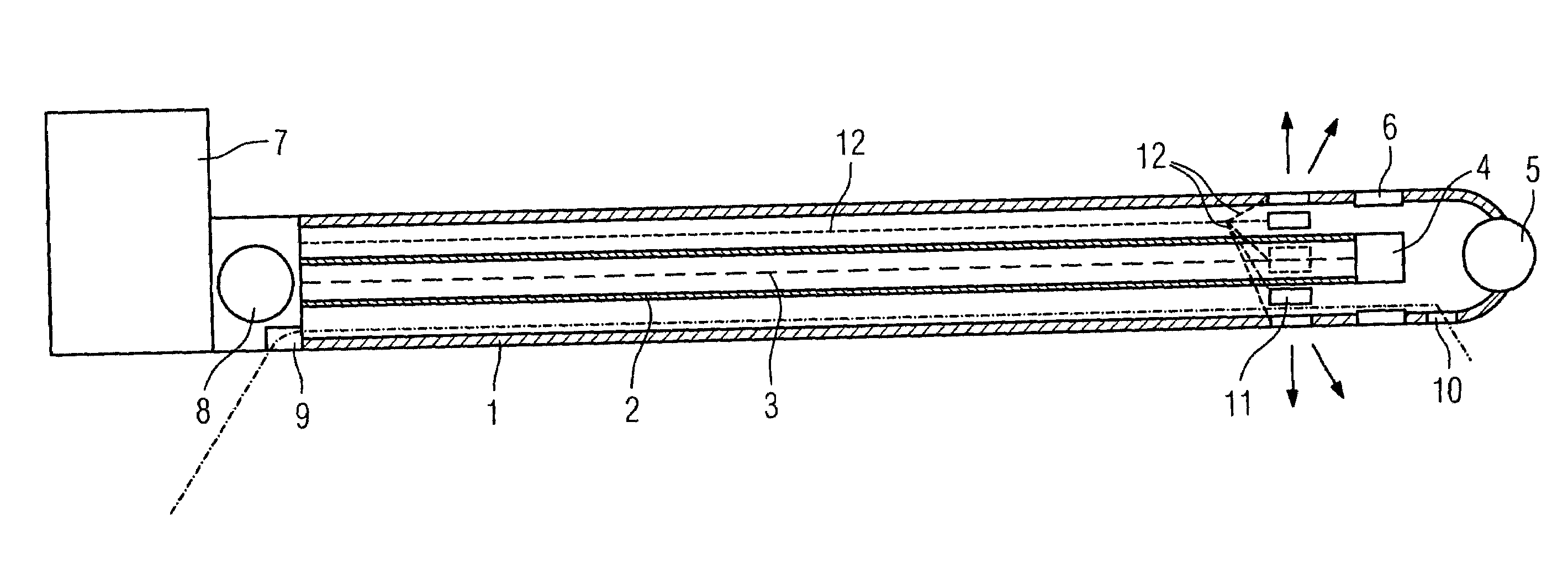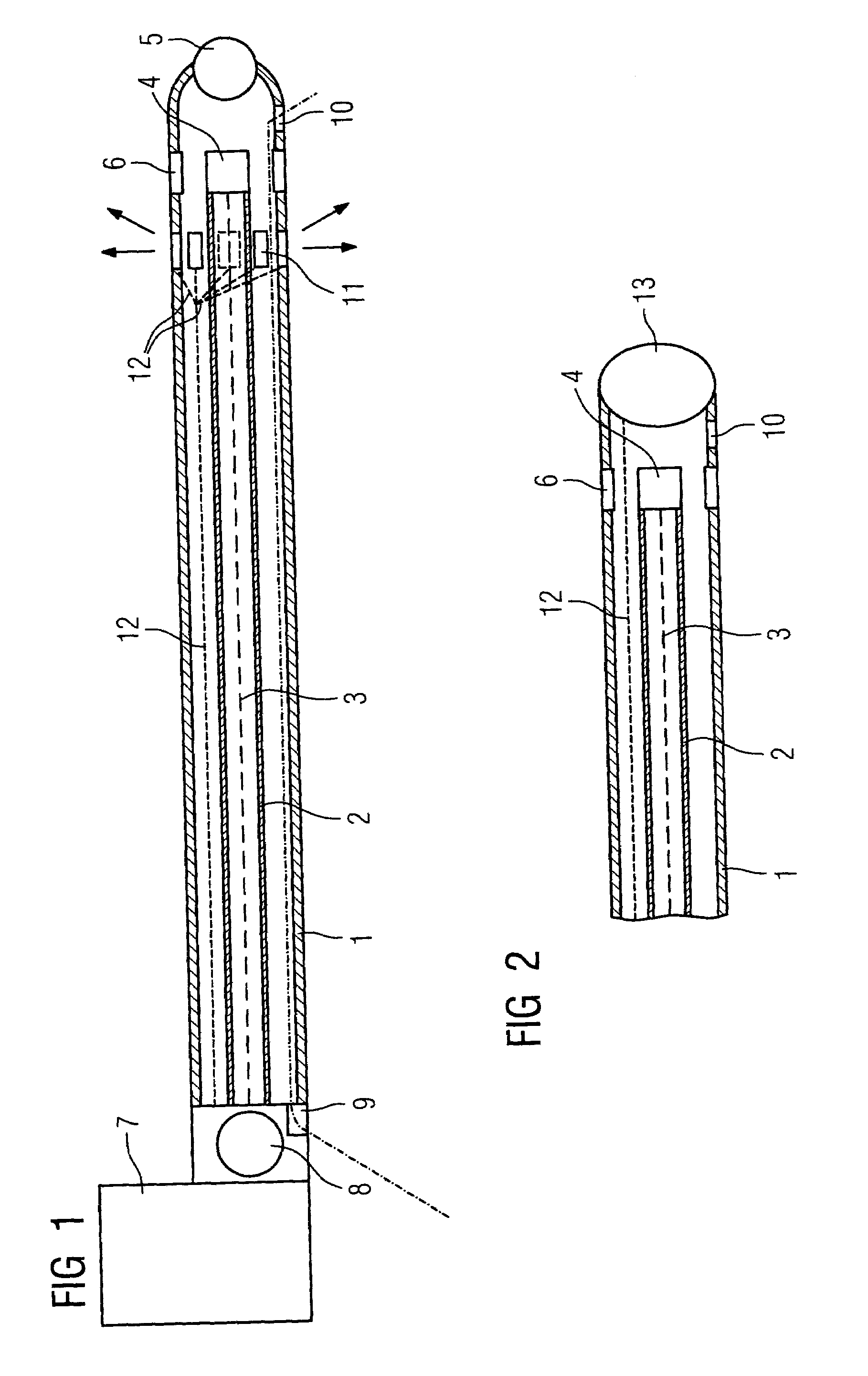Device for performing laser angioplasty with OCT monitoring
a laser angioplasty and monitoring device technology, applied in the field of laser angioplasty, can solve the problems of increasing the risk of laser being applied to the wrong place, difficult for medical staff to distinguish between plaque and vascular wall, and coronary arteries,
- Summary
- Abstract
- Description
- Claims
- Application Information
AI Technical Summary
Benefits of technology
Problems solved by technology
Method used
Image
Examples
Embodiment Construction
[0025]FIG. 1 is a schematic diagram of a combined OCT laser angioplasty catheter with an outer, flexible catheter sheath 1, inside which is disposed a hollow, flexible drive shaft 2 with integrated glass fiber line 3 as the OCT line. The hollow, flexible drive shaft is used for driving a rotating mirror 4 which forms the OCT sensor, said rotating mirror being disposed in the catheter tip behind a balloon 5 used for fixing the catheter and / or for vascular dilatation. The rotating mirror 4 is located inside a ring-shaped, circumferential output window 6 for the infrared light with which the inner vascular wall is irradiated and which is fed in via the signal lines 3, whereby the reflected light is fed back through the same line and processed at the external end of the catheter in an appropriate evaluation device 7. A rotating coupling for the connections is shown at 8, while 9 represents an inlet opening for feeding in contrast media and irrigation fluid which is transported forward i...
PUM
| Property | Measurement | Unit |
|---|---|---|
| distance | aaaaa | aaaaa |
| flexible | aaaaa | aaaaa |
| area | aaaaa | aaaaa |
Abstract
Description
Claims
Application Information
 Login to View More
Login to View More - R&D
- Intellectual Property
- Life Sciences
- Materials
- Tech Scout
- Unparalleled Data Quality
- Higher Quality Content
- 60% Fewer Hallucinations
Browse by: Latest US Patents, China's latest patents, Technical Efficacy Thesaurus, Application Domain, Technology Topic, Popular Technical Reports.
© 2025 PatSnap. All rights reserved.Legal|Privacy policy|Modern Slavery Act Transparency Statement|Sitemap|About US| Contact US: help@patsnap.com


